Use of Polyhedral Oligomeric Silsesquioxane (POSS) in Drug Delivery, Photodynamic Therapy and Bioimaging
- PMID: 34770861
- PMCID: PMC8588151
- DOI: 10.3390/molecules26216453
Use of Polyhedral Oligomeric Silsesquioxane (POSS) in Drug Delivery, Photodynamic Therapy and Bioimaging
Abstract
Polyhedral oligomeric silsesquioxanes (POSS) have attracted considerable attention in the design of novel organic-inorganic hybrid materials with high performance capabilities. Features such as their well-defined nanoscale structure, chemical tunability, and biocompatibility make POSS an ideal building block to fabricate hybrid materials for biomedical applications. This review highlights recent advances in the application of POSS-based hybrid materials, with particular emphasis on drug delivery, photodynamic therapy and bioimaging. The design and synthesis of POSS-based materials is described, along with the current methods for controlling their chemical functionalization for biomedical applications. We summarize the advantages of using POSS for several drug delivery applications. We also describe the current progress on using POSS-based materials to improve photodynamic therapies. The use of POSS for delivery of contrast agents or as a passivating agent for nanoprobes is also summarized. We envision that POSS-based hybrid materials have great potential for a variety of biomedical applications including drug delivery, photodynamic therapy and bioimaging.
Keywords: biomedical applications; drug delivery systems (DDS); imaging; photodynamic therapy (PDT); polyhedral oligomeric silsesquioxane (POSS).
Conflict of interest statement
The authors declare no conflict of interest.
Figures


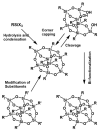

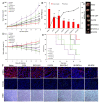

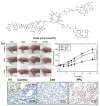
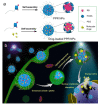


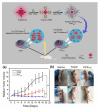
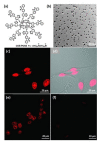

Similar articles
-
Design of Fluorescent Hybrid Materials Based on POSS for Sensing Applications.Molecules. 2022 May 13;27(10):3137. doi: 10.3390/molecules27103137. Molecules. 2022. PMID: 35630610 Free PMC article. Review.
-
Evaluation of Polyhedral Oligomeric Silsesquioxane Porphyrin Derivatives on Photodynamic Therapy.Molecules. 2020 Oct 27;25(21):4965. doi: 10.3390/molecules25214965. Molecules. 2020. PMID: 33120986 Free PMC article.
-
Polyhedral Oligomeric Silsesquioxane Hybrid Polymers: Well-Defined Architectural Design and Potential Functional Applications.Macromol Rapid Commun. 2019 Sep;40(17):e1900101. doi: 10.1002/marc.201900101. Epub 2019 Jul 31. Macromol Rapid Commun. 2019. PMID: 31364800 Review.
-
A nanocage for nanomedicine: polyhedral oligomeric silsesquioxane (POSS).Macromol Rapid Commun. 2011 Jul 15;32(14):1032-46. doi: 10.1002/marc.201100126. Epub 2011 May 19. Macromol Rapid Commun. 2011. PMID: 21598339 Review.
-
Recent Advances in Polyurethane/POSS Hybrids for Biomedical Applications.Molecules. 2021 Dec 22;27(1):40. doi: 10.3390/molecules27010040. Molecules. 2021. PMID: 35011280 Free PMC article. Review.
Cited by
-
Organosilicon Fluorescent Materials.Polymers (Basel). 2023 Jan 9;15(2):332. doi: 10.3390/polym15020332. Polymers (Basel). 2023. PMID: 36679212 Free PMC article. Review.
-
Design of Fluorescent Hybrid Materials Based on POSS for Sensing Applications.Molecules. 2022 May 13;27(10):3137. doi: 10.3390/molecules27103137. Molecules. 2022. PMID: 35630610 Free PMC article. Review.
-
A Novel Family of Cage-like (CuLi, CuNa, CuK)-phenylsilsesquioxane Complexes with 8-Hydroxyquinoline Ligands: Synthesis, Structure, and Catalytic Activity.Molecules. 2022 Sep 21;27(19):6205. doi: 10.3390/molecules27196205. Molecules. 2022. PMID: 36234735 Free PMC article.
-
Autophagy Regulation Using Multimodal Chlorin e6-Loaded Polysilsesquioxane Nanoparticles to Improve Photodynamic Therapy.Pharmaceutics. 2023 May 20;15(5):1548. doi: 10.3390/pharmaceutics15051548. Pharmaceutics. 2023. PMID: 37242794 Free PMC article.
-
POSS and SSQ Materials in Dental Applications: Recent Advances and Future Outlooks.Int J Mol Sci. 2023 Feb 24;24(5):4493. doi: 10.3390/ijms24054493. Int J Mol Sci. 2023. PMID: 36901923 Free PMC article. Review.
References
Publication types
MeSH terms
Substances
LinkOut - more resources
Full Text Sources

